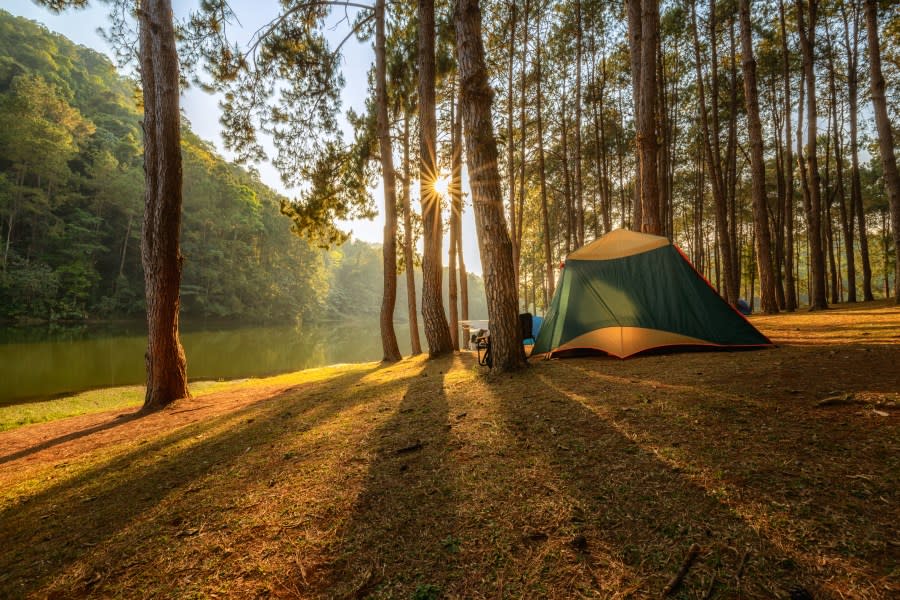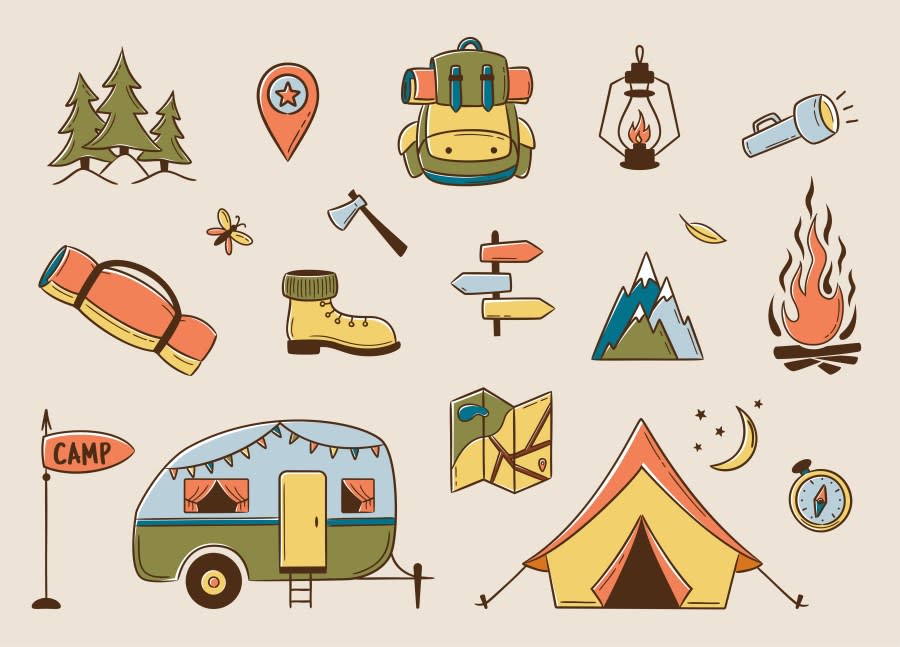Camping Safety: Essential tips for a safe outdoor experience

Tampa (BLOOM) – Unplugging, connecting with nature, and embarking on outdoor adventures are all part of the allure of camping. However, to ensure a truly enjoyable experience, it is crucial to prioritize safety. Whether you’re a seasoned camper or new to the wilderness, this article will provide you with essential tips for a secure outdoor experience. So, let’s dive in and explore how to make your camping trip both thrilling and safe!

Preparing for a Safe Camping Trip
Before you set off on your camping adventure, taking some time to prepare and plan can go a long way in ensuring a safe experience. Here are some important steps to consider:
Researching the campsite and its amenities: Familiarize yourself with the location, facilities, and any rules or regulations in place. This will help you understand the terrain, available resources, and potential hazards specific to the area.
Checking weather conditions and preparing accordingly: Mother Nature can be unpredictable, so staying informed about the weather forecast is crucial. Pack appropriate clothing and gear for the anticipated conditions and be prepared to adjust your plans if necessary.
Creating a detailed itinerary and sharing it with someone trusted: Inform a family member or friend about your camping plans, including your itinerary, expected duration, and contact details. This way, someone will be aware of your whereabouts and can alert authorities if needed.
Packing essential safety gear and equipment: Ensure you have a well-stocked first aid kit, including items like bandages, antiseptics, and any necessary medications. Additionally, pack a flashlight, a multipurpose tool, a fire extinguisher, and any other equipment relevant to your activities and the environment you’ll be camping in.
Campsite Safety Measures
Selecting a suitable campsite and establishing a secure setup are fundamental to ensuring your safety while camping. Consider the following measures:
Choosing a safe location for setting up the campsite: Look for a flat, elevated area away from dead trees, overhanging branches, or potential hazards. Avoid camping near bodies of water that may flood during heavy rains.
Setting up a secure and organized campsite layout: Arrange your tents, cooking area, and fire pit in a logical and orderly manner. Keep pathways clear to prevent tripping and create designated areas for different activities.
Properly handling campfires and cooking areas: Always follow local regulations and guidelines for campfires. Clear the area around the fire pit from flammable materials, never leave fires unattended, and ensure they are fully extinguished before leaving your campsite or going to sleep. Similarly, practice safe cooking techniques to prevent accidents or injuries.
Storing food and disposing of waste to avoid attracting wildlife: Properly store your food in sealed containers or bear-resistant canisters to prevent animals from being attracted to your campsite. Dispose of trash responsibly, using designated receptacles or by packing out what you brought in.
Personal Safety and Health Considerations
Taking care of your well-being is essential when camping in the great outdoors. Here are some personal safety and health tips to keep in mind:
Carrying a first aid kit and knowing basic first aid procedures: A well-stocked first aid kit is an absolute must-have. Familiarize yourself with its contents and learn basic first aid techniques such as treating minor injuries, recognizing the signs of heatstroke or hypothermia, and performing CPR if needed.
Protecting against insect bites, ticks, and poisonous plants: Apply insect repellent and wear protective clothing, especially during dawn and dusk when insects are most active. Learn to identify and avoid poisonous plants like poison ivy or poison oak to prevent allergic reactions or skin irritations.
Staying hydrated and maintaining personal hygiene: Drink plenty of water throughout the day to prevent dehydration. Keep personal hygiene a priority by washing your hands regularly and using appropriate sanitation methods.
Recognizing and preparing for potential outdoor hazards: Familiarize yourself with the area’s potential risks, such as steep cliffs, fast-flowing rivers, or slippery trails. Take precautions, use proper safety equipment when necessary, and be mindful of your surroundings to avoid accidents.
Navigation and Emergency Preparedness
Navigating the wilderness and being prepared for emergencies are vital aspects of camping safety. Here’s what you should keep in mind:
Carrying a map, compass, or GPS device for navigation: Ensure you have reliable navigation tools to help you stay on track and find your way back to your campsite or civilization if needed. Familiarize yourself with how to use them before your trip.
Informing others about your route and expected return time: Share your planned route and estimated return time with a trusted person. This way, if you encounter any unforeseen circumstances or fail to return as scheduled, help can be alerted.
Knowing how to signal for help in emergency situations: Learn basic distress signals such as whistle blasts, flashlight signals, or using items like mirrors or brightly colored clothing to attract attention. These signals can help rescuers locate you more easily.
Familiarizing yourself with local emergency services and procedures: Research the contact information for local emergency services in the area where you’ll be camping. Understand the protocols for reporting emergencies and the expected response times.
Weather and Natural Disaster Awareness
Outdoor environments are subject to weather changes and natural disasters. Here’s how to stay prepared and safe:
Monitoring weather forecasts and staying informed about changes: Keep an eye on weather updates throughout your camping trip. Be prepared to adapt your plans or seek shelter in case of severe weather conditions.
Preparing for severe weather conditions: Pack appropriate clothing, gear, and shelter options for different weather scenarios. Learn how to set up and secure your tent properly to withstand strong winds or heavy rain.
Understanding the risks of wildfires and proper fire safety measures: In areas prone to wildfires, follow local regulations regarding campfires and fire safety. Extinguish cigarettes properly, don’t leave campfires unattended, and report any signs of fire immediately.
Knowing evacuation routes and procedures in case of natural disasters: Research evacuation routes in the area and familiarize yourself with emergency procedures for events like flash floods, earthquakes, or severe storms. Be prepared to leave your campsite swiftly if necessary.
Wildlife Encounters and Animal Safety
Encountering wildlife can be an exhilarating part of camping, but it’s essential to approach these encounters with caution. Follow these guidelines to stay safe:
Understanding local wildlife and their behavior: Research the wildlife species present in the area and learn about their habits and potential threats. This knowledge will help you avoid unnecessary risks and act appropriately in their presence.
Storing food properly to prevent attracting animals: Keep food securely stored in bear-resistant containers or hang it from trees away from your campsite. Dispose of food scraps and trash properly to avoid attracting wildlife.
Practicing proper wildlife etiquette and keeping a safe distance: Observe animals from a distance, using binoculars or zoom lenses for a closer look. Never approach or attempt to feed wild animals, as this can be dangerous for both you and the animals.
Knowing how to respond to encounters with potentially dangerous animals: Research how to react in case of encounters with animals like bears, mountain lions, or venomous snakes. Understanding the appropriate actions to take can help you stay safe in such situations.
By following these essential camping safety tips, you can enjoy a secure and memorable outdoor experience. Remember to plan ahead, prioritize personal safety, stay informed about weather conditions, and be prepared for emergencies. By embracing responsible camping practices, you’ll create cherished memories while exploring the beauty of nature. So, pack your gear, venture into the wilderness, and have a safe and enjoyable camping trip! Happy camping!
Note: Always adhere to local regulations and guidelines specific to your camping destination to ensure the highest level of safety.
For the latest news, weather, sports, and streaming video, head to WFLA.

